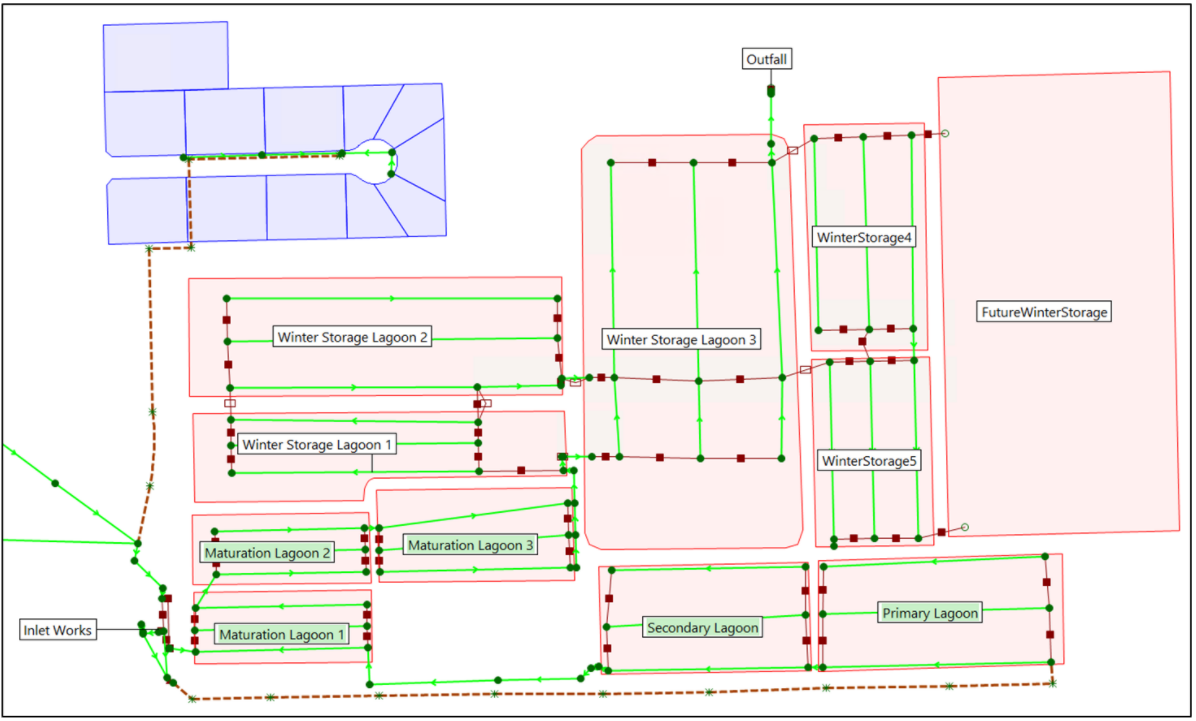Identifying hydraulic constraints at the Romsey WWTP
Hydraulic modelling of Sewage Treatment PlantsGreater Western Water (GWW) is planning to upgrade the Romsey Recycled Water Treatment Plant (WWTP) to accommodate sewage flows from an increasing population. The WWTP currently receives flows from over 10,000 people located in the townships of Romsey and Lancefield, and this is projected to increase by 27% over the next 15 years. GWW needs to increase the wet weather conveyance capacity and winter storage available at the WWTP to reduce the risk of environmental contamination.
The upgrades consist of the construction of new inlet works and new primary and secondary treatment lagoons. The existing primary and secondary treatment lagoons are proposed to be repurposed to provide additional winter storage capacity.
UWS used the InfoWorks ICM software to model the complete treatment works, undertake a long-term verification of the plant operation, then to test the impact of the planned augmentations in the verified model with the projected future flows. The new and existing lagoons, along with the wet weather flow paths transferring flows around the WWTP, were included in the model.
UWS also used InfoWorks ICM to simulate the impacts of design rainfall events occurring over the catchment area at the WWTP. The WWTP model provided insights into the way increased sewage flow is transferred from the inlet to the treatment lagoons, the impact of rainfall falling on the open lagoons, and the hydraulic interactions between the maturation and winter storages. This enabled the hydraulic throttles within the WWTP to be determined.

Using sophisticated hydraulic modelling software UWS identified the key hydraulic constraints and refined the proposed design with cost-effective augmentation amendments, ensuring the WWTP upgrades will cater for the projected population increase without adverse impact on the environment.
